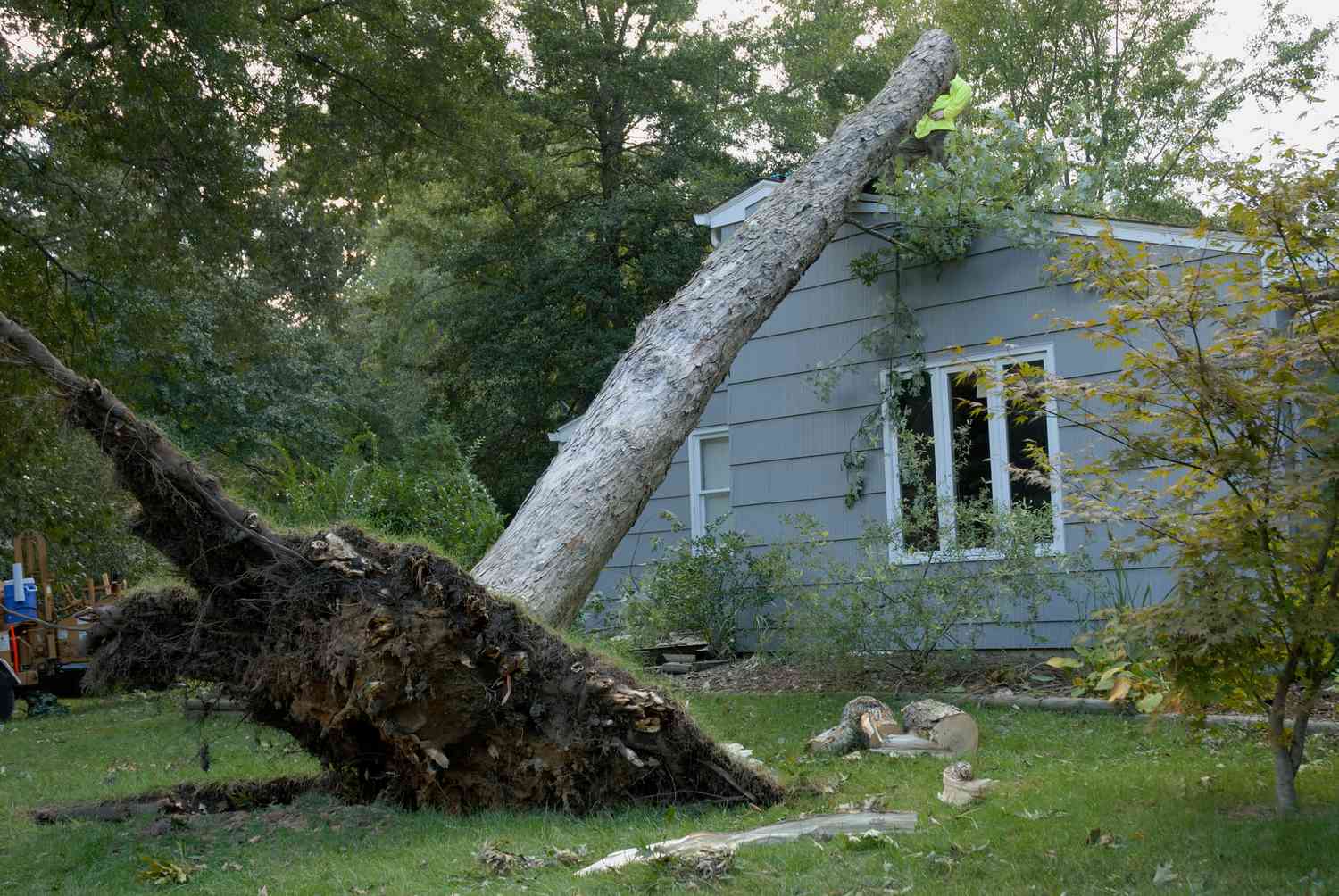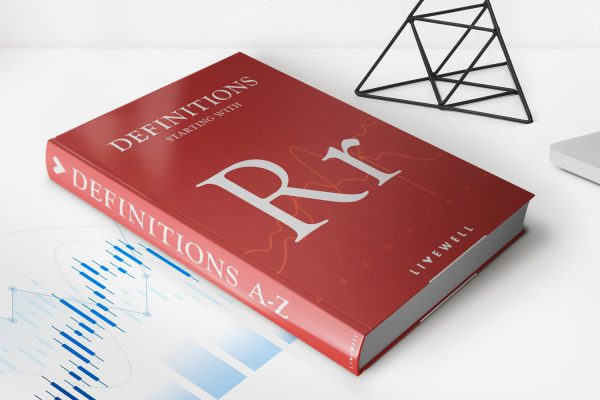

Finance
What Does Storage Insurance Cover?
Published: November 19, 2023
Discover what storage insurance covers and how it can protect your belongings. Ensure peace of mind with comprehensive coverage for your financial security.
(Many of the links in this article redirect to a specific reviewed product. Your purchase of these products through affiliate links helps to generate commission for LiveWell, at no extra cost. Learn more)
Table of Contents
- Introduction
- Understanding Storage Insurance
- Types of Storage Insurance Coverage
- Coverage for Personal Belongings
- Coverage for Damage or Loss
- Coverage for Natural Disasters
- Coverage for Theft or Vandalism
- Coverage for Fire or Water Damage
- Coverage for Mold or Pest Infestation
- Additional Coverage Options
- Exclusions and Limitations of Storage Insurance
- How to File a Storage Insurance Claim
- Conclusion
Introduction
When it comes to storing valuable belongings, whether it’s furniture, heirlooms, or seasonal items, there is always a risk of damage, loss, or theft. That’s where storage insurance comes in. Storage insurance is a type of coverage specifically designed to protect your personal belongings while they are stored away in a storage unit or facility.
While many storage facilities offer some form of basic insurance, it’s important to understand the coverage it provides and whether it meets your needs. It’s also essential to know what additional coverage options are available to ensure you have comprehensive protection.
In this article, we will explore the various aspects of storage insurance coverage, including what it covers, how to file a claim, and the limitations and exclusions you should be aware of. By understanding the intricacies of storage insurance, you can make informed decisions to safeguard your belongings and have peace of mind knowing that they are protected.
Understanding Storage Insurance
Storage insurance provides coverage for your personal belongings while they are stored away in a storage unit or facility. It serves as a financial safety net in case of unexpected events such as damage, loss, theft, natural disasters, or other covered incidents.
Storage insurance works similarly to homeowners or renters insurance, but with a focus on items that are not stored in your primary residence. With storage insurance, you can have peace of mind knowing that your belongings are protected even when they are not within your immediate reach.
It’s important to note that storage insurance coverage can vary depending on the insurance provider and the specific storage facility. Some storage facilities may offer their own insurance policies, while others may require you to obtain coverage from an external insurance provider.
When considering storage insurance, it’s crucial to evaluate the specific terms and conditions of the policy. This includes understanding the coverage limits, deductibles, and any exclusions or limitations that may apply.
Additionally, it’s essential to assess the value of your stored belongings to determine the appropriate coverage amount. This can be done by creating an inventory of your items and estimating their value. Keep in mind that certain high-value items may require additional coverage or appraisal.
By thoroughly understanding storage insurance and its nuances, you can make informed decisions to protect your belongings and mitigate financial risks associated with storage.
Types of Storage Insurance Coverage
Storage insurance coverage typically includes protection against various risks that your belongings may face while in storage. Here are some of the common types of coverage options:
- Coverage for Personal Belongings: This is the basic coverage that protects your stored items against damage or loss caused by covered perils such as fire, burglary, or vandalism. It typically includes protection for furniture, electronics, clothing, and other personal belongings.
- Coverage for Damage or Loss: This type of coverage reimburses you for the cost of repairing or replacing your belongings in case of accidental damage or loss. It can provide financial assistance if your items are damaged due to mishaps during the storage process or if the storage facility experiences a disaster.
- Coverage for Natural Disasters: Natural disasters such as hurricanes, earthquakes, floods, or tornadoes can cause significant damage to your stored belongings. Storage insurance may include coverage for these events, helping you recover the value of your items affected by such disasters.
- Coverage for Theft or Vandalism: Storage facilities are not immune to theft or vandalism. With coverage for theft or vandalism, you can receive compensation if your belongings are stolen or intentionally damaged by unauthorized individuals. It provides financial protection against these unfortunate events.
- Coverage for Fire or Water Damage: Fire outbreaks or water leaks can wreak havoc on your stored items. Storage insurance typically offers coverage for fire or water damage, ensuring that you will be reimbursed for the value of your belongings in case they are affected by these incidents.
- Coverage for Mold or Pest Infestation: Mold, mildew, and pest infestations can cause significant damage to your stored items, leading to costly repairs or replacements. Storage insurance that includes coverage for mold or pest damage can provide financial help if your belongings suffer from these issues while in storage.
It’s important to carefully review the specifics of your storage insurance policy to understand exactly what risks are covered and the limits of the coverage provided. Consider your location, climate, and the value of your stored items when determining the types of coverage you need to safeguard your belongings adequately.
Coverage for Personal Belongings
When considering storage insurance, one of the primary areas of coverage to focus on is coverage for your personal belongings. This type of coverage ensures that your stored items are protected against damage, loss, or theft.
Some common personal belongings that may be covered under storage insurance include furniture, appliances, electronics, clothing, and valuable items such as jewelry or collectibles. The coverage extends to a wide range of items, providing financial assistance in the event that they are damaged or go missing.
Storage insurance for personal belongings typically covers risks such as fire, smoke damage, water damage, theft, vandalism, and natural disasters. In the case of damage or loss, the insurance policy will reimburse you for the cost of repairing or replacing the affected items up to the coverage limit.
It’s essential to evaluate the value of your personal belongings accurately to ensure you have adequate coverage. If you have high-value items, such as fine art or antiques, you may need to consider additional coverage or obtain separate appraisals for these items.
When selecting storage insurance, it’s also important to review any limitations or exclusions that may apply. Some policies may have specific restrictions for certain types of items, such as fragile or perishable items. Make sure you understand the policy’s terms and conditions to ensure your belongings are properly covered.
To ensure smooth claim processing, it is recommended to keep records of your personal belongings, including photographs, serial numbers, and receipts. This documentation will help validate your claim and ensure you receive appropriate compensation for your damaged or lost items.
By having comprehensive coverage for your personal belongings, you can have peace of mind knowing that your stored items are protected against various risks. Whether it’s accidental damage, theft, or other covered incidents, storage insurance provides financial security and ensures that you can recover the value of your belongings.
Coverage for Damage or Loss
Storage insurance offers coverage for damage or loss of your stored belongings, providing financial protection in case of unexpected incidents. This type of coverage ensures that you can recoup the cost of repairing or replacing items that have suffered damage or gone missing during the storage period.
Accidents can happen, even in the most secure storage facilities. Whether it’s due to mishandling during the moving process or unforeseen events within the storage unit, damage or loss can occur. With storage insurance, you can be prepared for these circumstances and have the necessary financial support.
Damage coverage reimburses you for the cost of repairing or restoring your damaged belongings. This can include items that may have been accidentally dropped or bumped, resulting in scratches, dents, or broken parts. With damage coverage, you can have peace of mind knowing that your valuable belongings can be repaired without incurring significant expenses.
Loss coverage, on the other hand, provides compensation if your items go missing while in storage. Whether it’s due to theft, misplacement, or an administrative error at the storage facility, loss coverage ensures that you are financially protected. It allows you to replace the lost items without bearing the full cost.
It’s crucial to review the specific terms and conditions of your storage insurance policy to understand the extent of coverage for damage or loss. This includes knowing the coverage limits and any exclusions or deductibles that may apply.
It’s also important to keep records of your stored items, such as photographs, serial numbers, and receipts. This documentation can serve as evidence to support your claim in case of damage or loss. Taking inventory and documenting the condition of your belongings before storing them can also help streamline the claims process.
By having coverage for damage or loss, you can protect yourself financially from unforeseen events and ensure that your stored items can be repaired or replaced without a significant financial burden.
Coverage for Natural Disasters
Storage insurance often includes coverage for natural disasters, providing financial protection in the event that your stored belongings are damaged or destroyed by forces of nature. Natural disasters such as hurricanes, earthquakes, floods, or tornadoes can cause extensive damage, and having coverage for these events is essential for safeguarding your stored items.
When a natural disaster strikes, the stored items are vulnerable to various risks, including water damage, structural collapse, or debris impact. Storage insurance coverage for natural disasters ensures that you can recover the value of your belongings affected by these disasters.
With coverage for natural disasters, you can be reimbursed for the cost of repairing or replacing your damaged items up to the coverage limit. This enables you to recover financially and replace your belongings without incurring a significant financial burden.
It’s important to review the specific terms and conditions of your storage insurance policy to understand the extent of coverage for natural disasters. This includes knowing the types of natural disasters covered, any exclusions or limitations, and the documentation required to support your claim.
It’s worth noting that certain regions are more prone to specific types of natural disasters. For example, coastal areas may be at a higher risk of hurricanes or flooding, while areas near fault lines may be more susceptible to earthquakes. Understanding the natural risks in your area can help you assess the level of coverage you need for natural disasters.
When living in an area prone to natural disasters, it’s also important to take proactive steps to protect your stored items. This may include selecting a storage facility with robust safety measures such as flood-proofing, reinforced structures, or climate-controlled units. Some storage facilities located in high-risk areas may have additional insurance requirements specific to those regions.
By having coverage for natural disasters, you can mitigate the financial impact of these events and ensure that your stored items are adequately protected. In the face of unpredictable natural forces, storage insurance offers peace of mind and a safety net for your valuable belongings.
Coverage for Theft or Vandalism
One of the significant risks associated with storing your belongings is the possibility of theft or vandalism. Storage insurance typically includes coverage for these unfortunate scenarios, providing financial protection if your stored items are stolen or intentionally damaged by unauthorized individuals.
Storage facilities are not immune to theft or acts of vandalism. Unfortunately, even with security measures in place, there is always a potential for theft or malicious damage to occur. Having coverage for theft or vandalism ensures that you can be reimbursed for the value of your stolen or damaged items.
If your items are stolen from your storage unit, storage insurance can provide compensation for the loss. The policy will typically reimburse you for the estimated value of the stolen items, up to the coverage limit specified in your policy.
Coverage for vandalism protects you in the event that your stored belongings are intentionally damaged by individuals who do not have the authority to access your unit. This can include acts such as graffiti, destruction of property, or any other malicious actions. With this coverage, you can be reimbursed for the cost of repairs or replacement of the damaged items.
When selecting storage insurance, it’s essential to review the specific terms and conditions related to coverage for theft or vandalism. Familiarize yourself with any deductibles, exclusions, or limitations that may apply to this type of coverage.
To ensure a smooth claims process, it’s recommended to take preventative measures to protect your stored items. This may include selecting a storage facility with robust security measures, such as surveillance cameras, access controls, and proper lighting. Additionally, it’s wise to document your belongings and keep records such as photographs, serial numbers, and receipts, which can assist in validating your claim in case of theft or vandalism.
With coverage for theft or vandalism, you can have peace of mind knowing that you are financially protected against these unfortunate incidents. Storage insurance provides a safety net to help you recover from the loss or damage caused by unauthorized individuals and ensures that your stored belongings remain secure.
Coverage for Fire or Water Damage
Storage insurance often includes coverage for fire or water damage, providing financial protection if your stored belongings are affected by these incidents. Fires and water damage can occur unexpectedly and can cause extensive harm to your stored items, making coverage for these events crucial.
In the event of a fire outbreak, whether caused by external factors or within the storage facility, your stored belongings may suffer significant damage or be completely destroyed. Storage insurance coverage for fire damage ensures that you can be reimbursed for the value of your items up to the coverage limit specified in your policy.
Water damage, resulting from pipe leaks, roof leaks, or flooding, can also be detrimental to your stored belongings. Water damage can lead to mold growth, rotting, and irreparable harm to your items. Having coverage for water damage ensures that you are financially protected in case your belongings are affected by such incidents.
When reviewing your storage insurance policy, it’s crucial to understand the specific terms and conditions related to coverage for fire or water damage. This includes knowing any limitations, exclusions, or requirements such as documentation or proof of the damage.
To mitigate the risk of fire or water damage, it’s important to select a storage facility that has appropriate safety measures in place, including fire suppression systems, regular inspections, and proper drainage systems. Properly packing and sealing your items can also help protect them from potential water damage.
In the unfortunate event that your belongings are affected by fire or water damage, it’s recommended to document the damage as thoroughly as possible. This may include taking photographs, writing down a detailed inventory of the affected items, and gathering any relevant receipts or appraisals. These steps can help streamline the claims process and ensure that you receive the appropriate compensation for your damaged items.
Having coverage for fire or water damage provides peace of mind, knowing that your stored items are protected in case of unexpected incidents. It ensures that you can recover financially and replace your belongings without a significant financial burden.
Coverage for Mold or Pest Infestation
Storage insurance often includes coverage for mold or pest infestation, providing financial protection if your stored belongings are affected by these issues. Mold and pest infestations can cause significant damage to your stored items and compromise their integrity, making coverage for these incidents essential.
Mold can develop in storage units due to high humidity levels or moisture intrusion. Mold growth can lead to discoloration, deterioration, and unpleasant odors, rendering your belongings unfit for use or resale. With coverage for mold infestation, you can receive compensation for the cost of cleaning, restoring, or replacing your affected items.
In addition to mold, storage units can also be susceptible to pest infestations, such as rodents, insects, or vermin. Pests can damage your stored belongings, chew through materials, and leave behind waste or carcasses. Coverage for pest infestation ensures that you are protected financially if your items are damaged by these unwanted visitors.
When reviewing your storage insurance policy, it’s important to understand the specific terms and conditions related to coverage for mold or pest infestation. This can include any limitations, exclusions, or requirements regarding the prevention, reporting, and documentation of these issues.
To minimize the risk of mold or pest infestation, it’s recommended to take preventative measures such as selecting a storage facility with proper ventilation, humidity control, and regular pest control treatments. Additionally, packing your items in sealed containers and using appropriate materials can help deter pests and prevent moisture buildup.
In the event that you discover mold or pest infestation in your storage unit, it’s important to document the situation as thoroughly as possible. Take photographs, make detailed notes, and report the issue to the storage facility management as soon as possible. This documentation will be crucial when filing a claim and seeking compensation for the damage caused by mold or pest infestation.
Having coverage for mold or pest infestation ensures that you are financially protected against these common storage hazards. It provides peace of mind knowing that your stored belongings can be restored or replaced in the event of mold growth or pest damage.
Additional Coverage Options
In addition to the basic coverage provided by storage insurance, there may be additional coverage options available to enhance the protection for your stored belongings. These additional coverage options can offer increased peace of mind and ensure that you have comprehensive financial protection.
Some common additional coverage options for storage insurance include:
- Climate-Controlled Storage: If you are storing items that are sensitive to temperature and humidity changes, such as artwork, electronics, or musical instruments, you may want to consider opting for climate-controlled storage. This type of coverage ensures that your belongings are stored in a controlled environment, reducing the risk of damage due to extreme temperature fluctuations.
- Valuable Items Coverage: If you have high-value items such as jewelry, fine art, or collectibles stored in the unit, it’s important to consider additional coverage for these items. Valuable item coverage helps protect these specialized and expensive belongings, often requiring separate appraisals and higher coverage limits.
- Business Storage Coverage: If you are using a storage unit for business purposes, your storage insurance may not fully cover your business-related items. Adding business storage coverage can provide additional protection for your business inventory, equipment, documents, or supplies, ensuring that your business assets are adequately insured.
- Extended Coverage Periods: Some storage insurance policies have specific coverage periods, which may not align with the length of time you plan to keep your items in storage. If you need coverage beyond the standard period, consider extending your coverage to protect your belongings for as long as required.
- Transportation Coverage: If you are hiring a moving company or transporting your belongings to the storage facility yourself, consider adding transportation coverage. This coverage protects your items during transit and ensures that you are reimbursed in case of any damage or loss that occurs during transportation.
It’s important to carefully review the terms and conditions of these additional coverage options. Understand the coverage limits, deductibles, and any exclusions that may apply. Assess your specific storage needs and the value of your stored belongings to determine which additional coverage options are necessary for your situation.
By considering these additional coverage options, you can customize your storage insurance policy to provide comprehensive protection for your stored items, giving you added peace of mind and financial security.
Exclusions and Limitations of Storage Insurance
While storage insurance provides valuable coverage for your stored belongings, it’s important to be aware of the exclusions and limitations that may apply to your policy. These exclusions and limitations define the circumstances or items that are not covered or may have limited coverage. Understanding these terms is essential to ensure you have realistic expectations and can make informed decisions when it comes to protecting your belongings.
Common exclusions and limitations of storage insurance may include:
- Pre-Existing Damage: Storage insurance is designed to cover unforeseen events and risks. Typically, it does not provide coverage for pre-existing damage or wear and tear on your stored items. It’s important to thoroughly inspect and document the condition of your belongings before storing them to avoid any disputes regarding pre-existing damage.
- Unapproved Storage Units: Some storage insurance policies may have limitations on coverage if your belongings are stored in unapproved or unauthorized storage units. Ensure that the storage facility you choose meets the requirements set forth by your insurance provider to maintain full coverage.
- Non-Approved Items: Certain high-value or high-risk items may not be fully covered under standard storage insurance policies. These items may include cash, valuable documents, fine jewelry, or certain types of collectibles. You may need to seek separate coverage or endorse your policy to include adequate protection for these non-approved items.
- Acts of War or Terrorism: Damage or loss caused by acts of war or terrorism may be excluded from storage insurance coverage. These events are often considered high-risk situations that fall outside the scope of the policy’s coverage.
- Excessive Value or Quantity: In some cases, storage insurance policies may have limits on the maximum value or quantity of items that can be covered. If your stored belongings exceed these limits, you may need to seek additional coverage or adjust the policy accordingly.
It is crucial to thoroughly review your storage insurance policy to understand the specific exclusions and limitations that apply. Familiarize yourself with the terms and conditions to ensure that you have the appropriate coverage for your stored belongings.
If certain items or situations are not covered by your storage insurance, you may consider seeking alternative insurance coverage or taking additional precautions to protect those specific items. This can include seeking specialized coverage for high-value items or exploring additional security measures for added protection.
By understanding the exclusions and limitations of your storage insurance policy, you can better assess your coverage and make informed decisions to protect your stored belongings effectively.
How to File a Storage Insurance Claim
If your stored belongings have been damaged, lost, or stolen, it’s important to know how to file a storage insurance claim to initiate the process of receiving compensation. Here are the general steps to follow when filing a storage insurance claim:
- Review Your Policy: Start by reviewing your storage insurance policy and familiarizing yourself with the coverage details, deductibles, and claim procedures. Understanding the specific requirements can help ensure that you provide all necessary documentation and information when filing your claim.
- Document the Damage or Loss: Take detailed photographs or videos of the damaged or missing items. This visual evidence will help support your claim and provide documentation of the condition of your belongings before the incident. Make a list of the affected items, noting their value, any identifying marks, and a brief description of each item.
- Report the Incident: Notify the storage facility management as soon as possible about the damage, loss, or theft. They can provide guidance on their specific reporting procedures and may require you to complete an incident report. Keep copies of all communication and documentation related to the incident for your own records.
- Contact Your Insurance Provider: Reach out to your storage insurance provider to inform them of the situation and initiate the claim process. They will guide you through the necessary steps and provide you with the appropriate claim forms to fill out.
- Complete the Claim Forms: Carefully complete all claim forms provided by your insurance provider, ensuring that all required information is accurate and comprehensive. Include details such as the circumstances of the incident, the date and time of occurrence, and itemized documentation of the damaged or missing items.
- Provide Supporting Documentation: Gather any additional documentation that may be required by your insurance provider, such as receipts, appraisals, or repair estimates. These documents can further substantiate the value and condition of your belongings and strengthen your claim.
- Submit the Claim: Submit the completed claim forms and supporting documentation to your insurance provider within the designated timeframe specified in your policy. Keep copies of everything you submit for your own records.
- Cooperate with the Claims Adjuster: Once your claim is submitted, an insurance claims adjuster will be assigned to assess the validity and extent of your claim. Cooperate fully with the adjuster, providing any additional information or documentation they may request. They may conduct an investigation or inspection of the storage unit, as necessary.
- Receive Compensation: If your claim is approved, you will receive compensation for the damaged, lost, or stolen items as outlined in your policy. The reimbursement amount may be determined based on factors such as depreciated value or replacement cost, depending on the terms of your policy.
It’s important to note that the claim process and requirements may vary depending on your insurance provider. Always refer to your own policy documentation and consult with your insurance provider for specific instructions and guidelines on filing a storage insurance claim.
By following these steps and providing accurate and comprehensive documentation, you can facilitate the claims process and increase the likelihood of a successful outcome in receiving compensation for your stored belongings.
Conclusion
Storage insurance offers valuable protection for your personal belongings while they are stored away in a storage unit or facility. It safeguards against risks such as damage, loss, theft, natural disasters, and other covered incidents. By understanding the nuances of storage insurance, you can make informed decisions to ensure that your stored items are adequately protected.
Throughout this article, we have explored various aspects of storage insurance coverage. We discussed the different types of coverage available, including coverage for personal belongings, damage or loss, natural disasters, theft or vandalism, fire or water damage, and mold or pest infestation. Each of these coverage options is designed to provide financial security and peace of mind as you store your belongings.
We also discussed the importance of understanding the exclusions and limitations of storage insurance. Being aware of what is not covered or has limited coverage can help you manage your expectations and take necessary precautions to protect the items that may fall outside the scope of your policy.
Additionally, we examined the steps involved in filing a storage insurance claim. Being prepared and following the proper procedures when filing a claim increases the chances of a smooth and successful resolution in receiving compensation for damaged, lost, or stolen items.
Remember, storage insurance is not a one-size-fits-all solution. It’s crucial to review your own policy and assess your specific storage needs to ensure that you have appropriate coverage for your belongings. Consider factors such as the value of your stored items, the location and climate of the storage facility, and any additional coverage options that may be available.
By taking the time to understand storage insurance and actively manage your policy, you can protect your stored belongings and have peace of mind knowing that they are covered. Whether it’s a sentimental heirloom, valuable electronics, or seasonal items, storage insurance provides the necessary financial safety net for your stored possessions.
Remember to periodically review and update your storage insurance coverage as your storage needs change. With the right coverage in place, you can confidently store your belongings and focus on other important aspects of life, knowing that they are protected and secure.














